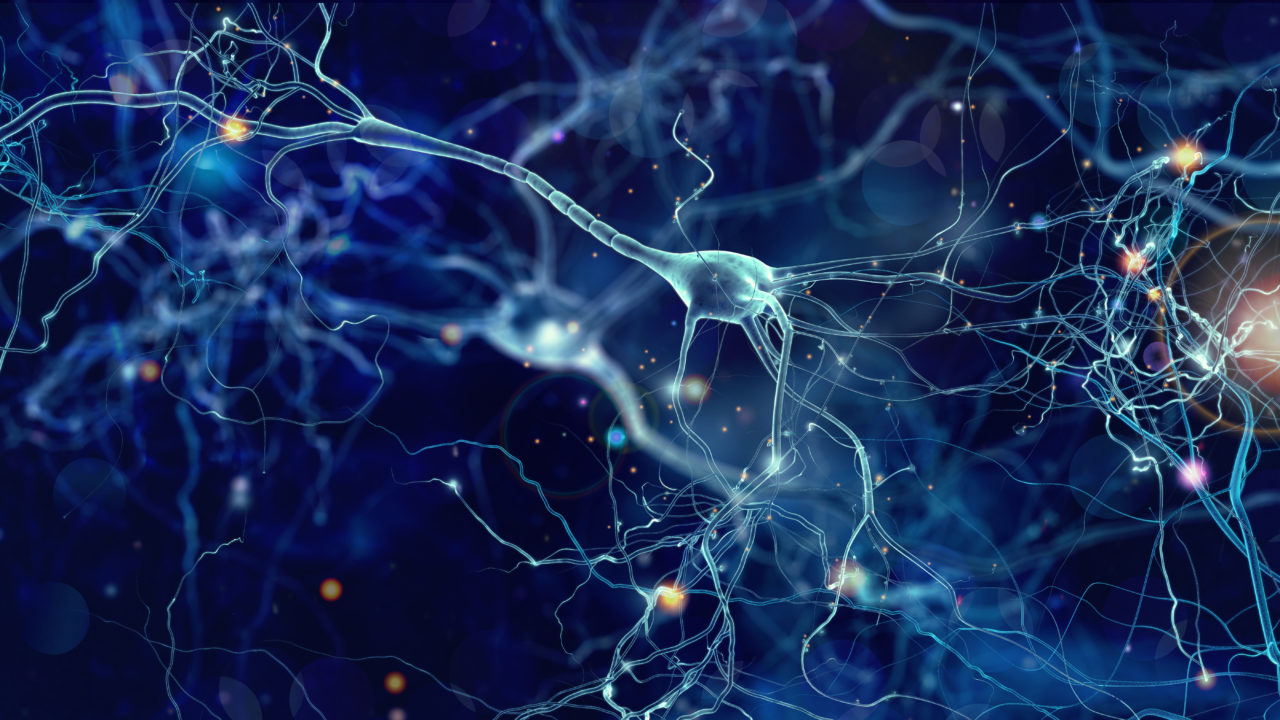
Posted December 7, 2021

Alzheimer’s disease (AD) is characterized by the presence of amyloid-beta (Aβ) plaques and tau neurofibrillary tangles (NFTs). Despite this knowledge, scientists do not know how these tau tangles develop in the first place. A new study published in Cell Reports by Anthony Fitzpatrick, Ph.D. of Columbia University, and Leonard Petrucelli, Ph.D. of the Mayo Clinic now sheds light on this mystery.
Although AD patients exhibit different patterns of pathology, one observation tends to stay consistent: the AD tau filament core structure or “tau core” is present in virtually all patients, suggesting that a common biological process drives tau filament formation. Additionally, abnormal tau protein is known to recruit and convert otherwise normal tau protein into a pathological species—this negative peer pressure from protein to protein is commonly referred to as seeding behavior. Putting two and two together, Fitzpatrick and Petrucelli hypothesized that the AD tau filament core might itself have self-aggregating properties. If true, the propensity to aggregate might drive spontaneous self-assembly into filaments.
To test this possibility, they created a recombinant protein containing only the AD tau filament core and observed that, in the presence of an inducer, the filament core aggregated significantly more compared to when the same inducer was used against the full-length version of the tau protein.
Using an external agent to induce aggregation of tau to study it in the lab is common practice—but outside of the laboratory and experimental settings, tau aggregates without an inducer. If there were a way to model this aggregation without an inducer, researchers would have a more physiologically relevant model of tau aggregation. In an effort to generate an inducer-independent protocol for aggregation, the researchers gently agitated the recombinant tau core protein. Encouragingly, even in the absence of an inducer, this agitation protocol did, in fact, enable spontaneous filament assembly.
To better understand the time course of filament assembly using their new aggregation protocol, the researchers measured filament formation across several time points using three different approaches: a thioflavin fluorescence assay, ultracentrifugation and electron microscopy (EM). All three approaches can reveal the presence of filaments and all do so with varying degrees of specificity. By combining all three, the researchers obtained a fuller picture of how quickly tau filaments form: as early as 4-6 hours in the fluorescence assay and significantly increased at the 6-8-hour time point across all tests. Collectively, the three analyses reveal that the tau core protein can self-aggregate in the absence of an inducer and offers researchers an alternative, and arguably more physiologically relevant model, to use for studying tau protein.
Next, the research team wanted to confirm physiological relevance of their observations by directly studying the relationship between the AD tau filament core and the full-length wild type tau. In particular, they asked: can the AD tau filament core (on its own and without an inducer) stimulate aggregation of full-length wild type tau? To answer this question, they incubated the AD tau core and full-length tau either separately or together for three days (using their constant agitation protocol) and then looked for the presence of aggregated tau. After three days of this protocol, they found: no aggregation in the full-length wild-type tau, some aggregation in AD tau core by itself, and dramatically increased aggregation when the two were combined, indicating that the tau core is seeding filament formation and converting otherwise normal and healthy tau protein into aggregated, pathological species.
Notably, the team also measured tau seeding on day 0. This measurement is important because, at the outset, the protein present is monomeric—it’s made up of simple chains of amino acids. By day 3, however, the AD core protein has formed into higher-order secondary structures (i.e., into the AD tau core filaments) and only then does the AD tau core filament act as a seed, converting wild-type tau into aggregated forms. In other words: the simple presence of AD tau core will not convert wild-type tau into aggregated filaments. First, the tau core needs to self-aggregate, and only then can it exert its negative peer pressure on healthy full-length tau proteins, causing them to aggregate. Interestingly, the researchers found that CBD and PiD cores spontaneously form filaments in a manner similar to the AD tau core, indicating a relevance of the reported techniques and protocols for tauopathies aside from Alzheimer’s disease.
Recognizing the diagnostic potential of a self-aggregating AD tau core, the team tested its ability to act as a substrate to seed abnormal tau in the real-time quaking-induced conversion (QuIC) assay. The QuIC assay is a diagnostic test used in clinics to determine the levels of abnormal proteins (in this case tau). Although the real-time QuIC assay is sensitive enough to detect abnormal tau present in CSF, the procedure typically uses a His-tagged tau substrate and relies on the use of heparin as an inducer of aggregation, limiting both the sensitivity and physiological relevance of the test. In contrast, the QuIC assay developed by Fitzpatrick and Petrucelli uses the AD tau core as a substrate and, consequently, does not need an inducer to kickoff aggregation. Their improved QuIC assay yielded a high signal, with great separation between AD brain samples and control brain samples at low dilutions, ultimately improving upon the sensitivity of existing QuIC assays. Altogether, this study provides researchers with a new and more physiologically relevant way to model and study tauopathies in the lab and, eventually, in the clinic.
Published in:
Cell Reports
Anthony Fitzpatrick, Ph.D., Columbia University
Leonard Petrucelli, Ph.D., Mayo Clinic





